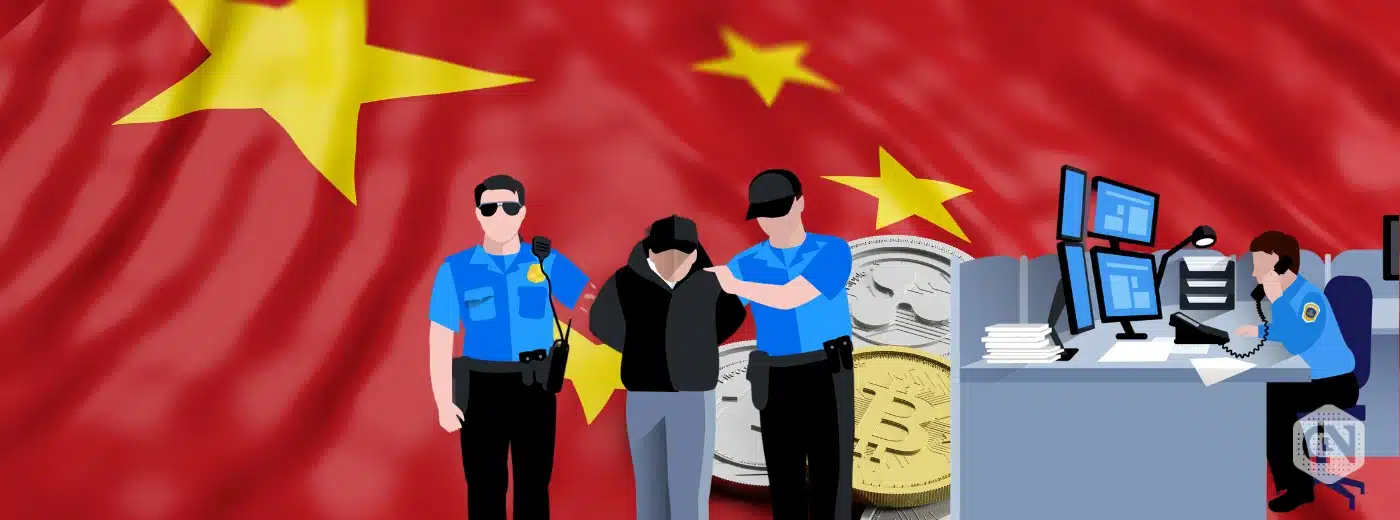In the bustling landscape of Qingdao, China, an intricate web of cybercrime involving the cryptocurrency stablecoin USDT has drawn the attention of the local authorities. A group of nine suspects is now at the heart of a complex investigation, with a notable sum of 8 million yuan embroiled in the allegations. The case sheds light on the increasingly sophisticated tactics employed by cybercriminals in the digital finance realm.
The Sequence of Discovery in Qingdao’s Cybercrime Saga
The narrative unfolded in February, when vigilant detectives at the Madian Police Station of the Jiaozhou Public Security Bureau identified a fugitive, known for his involvement in telecom fraud, making a re-appearance in Jiaozhou. The turning point came on February 24, following the apprehension of the suspect, Xue, and the discovery of suspicious communications on his mobile device that hinted at an illicit alliance.
The probe revealed that Xue had exploited his networks to establish companies and open bank accounts in the guise of ‘study abroad’ initiatives, for which he received financial remuneration. This revelation was merely the tip of the iceberg.
Unraveling the USDT Connection
Recognizing the gravity of Xue’s activities, law enforcement initiated a detailed investigation, focusing on the transaction records under the innocent guise of ‘study abroad’. It was discovered that these transactions were linked to public accounts set up using business licenses, intended for purchasing USDT. USDT’s role as a preferred medium for laundered money came starkly into focus.
Kuang, identified as Xue’s accomplice, was arrested on February 26. His confession unveiled a partnership among Xue, Kuang, and two others, Sun and Sui, specifically designed to facilitate criminal enterprises.
The Criminal Blueprint: Understanding Their Strategy
Kuang’s admissions, coupled with Sun and Sui’s direct involvement, outlined a primarily digital coordination among the group since September. They attracted Kuang with a straightforward yet illicit scheme: using public accounts to launder money. Despite initial reluctance, the temptation of easy profit ensnared Kuang, who then involved Xue and Sui in their operations.
By November, the organization was proficiently managing these accounts to launder money, buying USDT, and moving it across their network to remove any traces from their illicit gains.
Apprehensions and Implications: A Culmination to Justice
The relentless efforts of the investigative team led to the capture and confession of Sun and Sui, followed by the arrest of six additional suspects involved in the illegal trade of national documents. This four-month intensive operation laid bare the mechanism of their money laundering: a cycle of converting illicit funds into USDT and distributing the digital currency among the ringleaders.
The arrests signal a stark warning against the misuse of personal identification documents and financial instruments. Public vigilance and awareness are paramount to avoid entanglement in the nefarious web woven by such criminal entities.
The Qingdao case stands not just as an account of cybercriminal pursuit but as a poignant reminder of the digital finance domain’s vulnerability to illicit exploitation. As the authorities continue to clamp down on such activities, a collective acknowledgment and readiness among civilians to fight against such cybercrimes are indispensable. The unfolding events in Qingdao will no doubt serve as a critical case study in bolstering cybersecurity and financial regulations in the era of digital currency.
